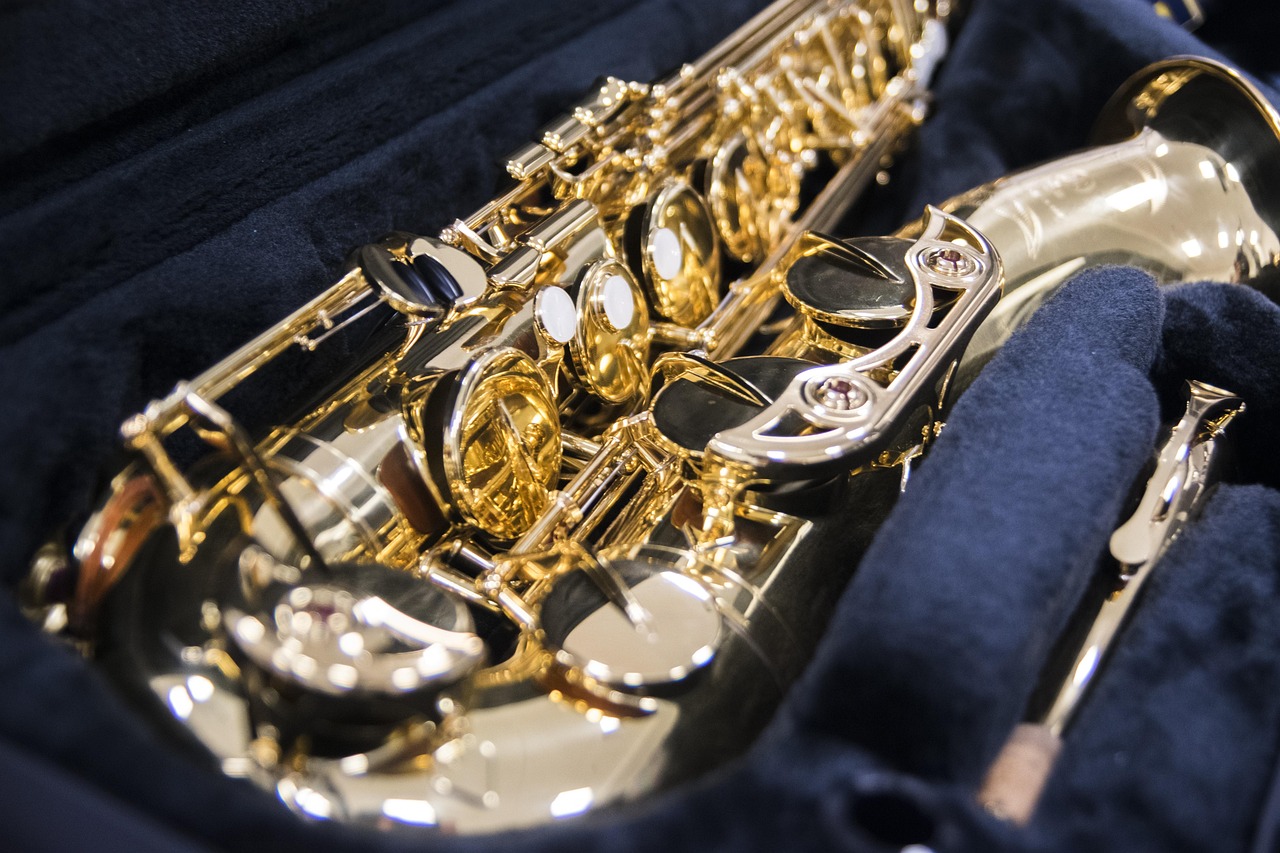Saxophone pads are the unsung heroes of your instrument. Those leather cushions seated within each key cup are responsible for creating an airtight seal when pressed against the tone holes. Without properly maintained pads, even the most expensive professional saxophone will sound stuffy, leak air, and develop frustrating playing issues. Regular cleaning and maintenance of your saxophone pads is an essential skill for players of all levels.
As someone passionate about helping musicians maintain their instruments, I’ve put together this practical guide to saxophone pad cleaning. Whether you’re dealing with sticky pads, dirt buildup, or just performing routine maintenance, this article will walk you through effective methods to keep your saxophone pads in optimal condition.
Check out our article about the best saxophone brands here.
Table of Contents
- 1 Why Saxophone Pad Cleaning Matters
- 2 Signs Your Saxophone Pads Need Cleaning
- 3 Essential Supplies for Cleaning Saxophone Pads
- 4 Step-by-Step Guide to Cleaning Saxophone Pads
- 5 Special Considerations for Different Pad Types
- 6 Advanced Pad Maintenance Techniques
- 7 When to Seek Professional Help
- 8 Environmental Factors Affecting Saxophone Pads
- 9 Saxophone Pad Cleaning for Different Saxophone Types
- 10 Creating a Pad Maintenance Schedule
- 11 Common Mistakes to Avoid When Cleaning Saxophone Pads
- 12 The Impact of Playing Habits on Pad Condition
- 13 Final Thoughts on Saxophone Pad Maintenance
Why Saxophone Pad Cleaning Matters
Before diving into cleaning techniques, it’s important to understand why saxophone pad maintenance is crucial:
- Extended Pad Life: Regular cleaning prevents premature deterioration, saving you money on pad replacements.
- Improved Sound Quality: Clean, properly sealing pads allow for better tone production and articulation.
- Responsive Keys: Sticky or dirty pads can cause keys to stick, affecting your technique and playing speed.
- Prevents Moisture Damage: Removing moisture after playing helps prevent pad rot and mildew.
According to information from the National Association of Professional Band Instrument Repair Technicians, proper pad maintenance can extend pad life by several years, while neglect can reduce it to just months in extreme cases.
Signs Your Saxophone Pads Need Cleaning
How do you know when it’s time to clean your saxophone pads? Look for these telltale signs:
- Sticky keys that don’t spring back immediately
- Unusual sounds like squeaks or air leakage when playing certain notes
- Visible dirt or residue on pad surfaces
- Water spots or discoloration on pads
- Musty odor coming from the instrument
If you notice any of these issues, it’s time to clean your saxophone pads.
Essential Supplies for Cleaning Saxophone Pads
Before beginning the cleaning process, gather these supplies:
- Pad cleaning paper (non-abrasive, powder-free)
- Key oil (for the mechanical parts, not the pads themselves)
- Microfiber cloths
- Cotton swabs
- Pad cleaning products specifically designed for woodwind instruments
- Small, soft brush
- Cork grease (for maintaining cork components)
Saxophone cleaning supplies are readily available on Amazon, with options for beginners through professional players.
Step-by-Step Guide to Cleaning Saxophone Pads
Daily Maintenance: Prevention is Key
The most effective pad maintenance strategy is preventative care after each playing session:
- Swab the inside of your saxophone thoroughly to remove moisture before putting it away.
- Wipe the exterior of the instrument, including around the keys, with a clean microfiber cloth.
- Allow your instrument to air out briefly before closing the case.
- Store your saxophone in a climate-controlled environment away from extreme temperatures or humidity.
These simple steps can prevent many pad issues before they begin.
Addressing Sticky Pads
Sticky pads are among the most common saxophone pad problems. Here’s how to address them:
- Identify the sticky pad by playing the instrument and noting which keys feel sluggish.
- Place a sheet of pad paper (sometimes called cigarette paper, though specifically designed pad papers are recommended) between the pad and tone hole.
- Gently press the key closed on the paper.
- Pull the paper through while maintaining light pressure on the key.
- Repeat this process with a clean section of paper until no residue appears on the paper.
For particularly stubborn sticky pads:
- Apply a small amount of pad cleaning product to your cleaning paper.
- Follow the same procedure as above.
- Finish with dry cleaning paper to remove any excess cleaning product.
Deep Cleaning Saxophone Pads
For more thorough pad maintenance, follow these steps:
- Examine each pad in good lighting to identify dirt, residue, or damage.
- For leather pads with visible dirt:
- Use a small, soft brush to gently remove loose particles from the pad surface.
- Avoid applying excessive pressure, which could damage the pad.
- For water spots and mineral deposits:
- Slightly dampen a cotton swab with pad cleaning solution.
- Gently dab (don’t rub) the pad surface.
- Follow with dry pad paper to absorb moisture.
- For pads with grooves or indentations where dirt can accumulate:
- Use a cotton swab slightly moistened with pad cleaner.
- Carefully clean along the edges where the pad meets the key cup.
- After cleaning each pad:
- Allow it to dry completely before moving to the next.
- Check for proper seating by gently pressing the key and observing if the pad makes even contact with the tone hole.
Special Considerations for Different Pad Types
Modern saxophones use various types of pads, each requiring slightly different care:
Traditional Leather Pads
The most common type of saxophone pad, these require regular cleaning to prevent moisture damage:
- Avoid excessive moisture when cleaning.
- Never use alcohol-based products, which can dry out and crack the leather.
- Use purpose-made pad cleaning solutions designed for leather pads.
Synthetic Pads
Some modern saxophones feature synthetic pads, which are more resistant to moisture but still require maintenance:
- Can generally withstand slightly more moisture during cleaning.
- Still require regular removal of dirt and sticky residue.
- Check manufacturer recommendations for specific cleaning products.
Resonators and Pad Types
Pads with metal resonators need special attention:
- Clean around the edges where the resonator meets the pad material.
- Be careful not to dislodge the resonator during cleaning.
- Examine for any separation between the resonator and pad material.
Advanced Pad Maintenance Techniques
For players looking to extend their pad maintenance skills:
Using Powder Papers
Powder papers are specially designed papers with a light talc coating that can help with persistent stickiness:
- Place the powder paper between the pad and tone hole.
- Press the key gently several times.
- Remove the paper and test the key action.
This technique should be used sparingly, as excess powder can accumulate over time.
Pad Conditioning
For leather pads that have dried out but aren’t damaged enough to replace:
- Apply a tiny amount of pad conditioner (specially formulated for woodwind pads) to a cotton swab.
- Lightly dab the pad surface – less is more!
- Allow the conditioner to absorb for several hours or overnight.
- Wipe away any excess with a clean, dry cloth.
This should only be done occasionally and with products specifically designed for saxophone pads.
When to Seek Professional Help
While regular cleaning will extend the life of your saxophone pads, there comes a time when professional intervention is necessary. Consider consulting a qualified instrument repair technician when:
- Pads are torn, cracked, or showing significant wear
- Pads no longer create a proper seal despite cleaning
- Keys remain sticky after multiple cleaning attempts
- Pads have become discolored or hardened
- You notice mold or mildew that doesn’t respond to surface cleaning
A good repair technician can replace individual pads or perform a complete repad if necessary. According to the Woodwind & Brasswind resource center, a typical saxophone should have pads replaced every 3-5 years with regular playing, though this varies based on playing frequency, climate, and maintenance habits.
Environmental Factors Affecting Saxophone Pads
Understanding how environment affects your saxophone pads can help you take preventative measures:
Humidity Concerns
- High humidity environments can cause pads to swell and become more susceptible to sticking.
- Low humidity conditions can cause leather pads to dry out and crack.
- Consider using humidity control products in your saxophone case if you live in an area with extreme conditions.
Temperature Effects
- Extreme heat can soften adhesives that hold pads in place and damage pad materials.
- Cold temperatures can make leather pads stiff and less effective at creating seals.
- Avoid leaving your saxophone in cars, direct sunlight, or uninsulated spaces.
Saxophone Pad Cleaning for Different Saxophone Types
While the basic principles of pad care apply to all saxophones, there are some considerations specific to different instruments in the saxophone family:
Soprano Saxophone
- Smaller, more delicate pads require gentler handling during cleaning.
- Higher risk of condensation due to the smaller bore size means more frequent swabbing is necessary.
Alto Saxophone
- Most common student model, often needing more frequent pad maintenance due to beginners’ playing habits.
- Standard pad cleaning techniques work well for this instrument.
Tenor Saxophone
- Larger pads may require more cleaning paper or product per pad.
- Pay special attention to low note pads, which often collect more moisture.
Baritone Saxophone
- Extensive key system means more pads to maintain.
- Low register pads particularly prone to moisture accumulation.
- Consider using a pad dryer designed for larger woodwind instruments.
Creating a Pad Maintenance Schedule
Establishing a regular maintenance routine will help you keep track of your saxophone pad care:
- After every playing session: Swab the instrument, wipe down exterior surfaces.
- Weekly: Check for sticky pads and perform basic cleaning as needed.
- Monthly: Perform a more thorough inspection and cleaning of all pads.
- Quarterly: Deep cleaning session, check for pads that may need professional attention.
- Annually: Professional check-up with a qualified repair technician.
Common Mistakes to Avoid When Cleaning Saxophone Pads
Even with the best intentions, improper cleaning techniques can damage your saxophone pads:
- Using too much liquid when cleaning pads can cause swelling and distortion.
- Applying excessive pressure can compress or damage the pad material.
- Using household cleaning products not designed for musical instruments can contain chemicals harmful to pads.
- Neglecting to dry pads completely after cleaning can lead to mold growth.
- Using abrasive materials can scratch or tear delicate pad surfaces.
- Pulling keys beyond their normal range of motion when accessing pads for cleaning.
The Impact of Playing Habits on Pad Condition
Your personal habits as a player significantly affect how quickly saxophone pads deteriorate:
- Eating before playing without washing hands can transfer oils and food particles to pads.
- Playing immediately after drinking sugary beverages can cause sticky residue on pads.
- Proper warm-up techniques reduce condensation buildup inside the instrument.
- Regular, shorter practice sessions may be less taxing on pads than infrequent, extended sessions.
Final Thoughts on Saxophone Pad Maintenance
Saxophone pad cleaning is a vital skill that pays dividends in instrument performance and longevity. By incorporating regular pad maintenance into your practice routine, you’ll enjoy better sound quality, more responsive key action, and fewer trips to the repair shop.
Remember that proper pad care is just one aspect of overall saxophone maintenance. Pair these pad cleaning techniques with regular care of the body, mechanism, and mouthpiece for a comprehensive approach to instrument maintenance.
With the right supplies, techniques, and regular attention, your saxophone pads will remain in excellent condition for years to come, allowing you to focus on what matters most—making music.
This article is based on generally accepted saxophone maintenance practices from reputable sources including instrument manufacturers, professional repair technicians, and music educators. Always consult your instrument’s specific care guidelines or a professional repair technician for concerns about your particular saxophone.

